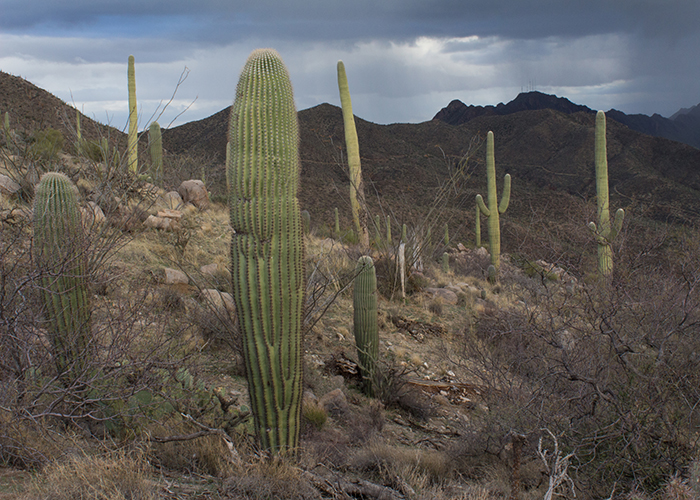The skies opened up as I headed three hours to the west of Tucson. In one sense, they released their winter showers with great gusto along the road. In another, they lightened up the further I went! Luckily, these winter showers are not known to cause flash floods, which is great, because I didn’t want to get stranded at Organ Pipe Cactus National Monument!
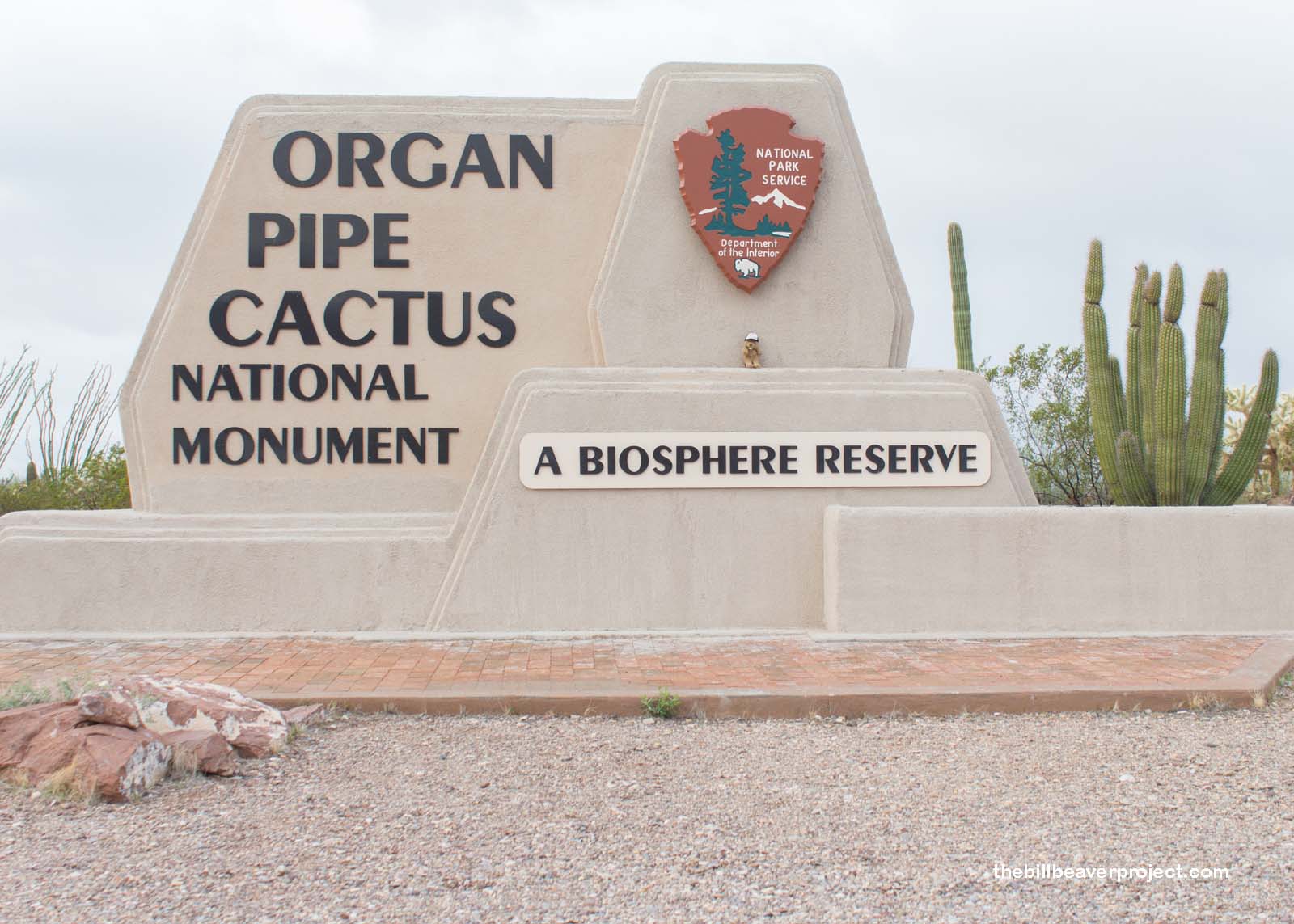 |
This UNESCO Biosphere Reserve is magnificent, the only place in the United States where you can find the organ pipe cactus—contrary to its name, you can’t play any Andrew Lloyd Webber tunes on it. Nonetheless, it’s still the heart of the desert and not the kind of place you’d want to be stranded for a couple of reasons. Both became apparent at the Red Tanks Tinaja trailhead!
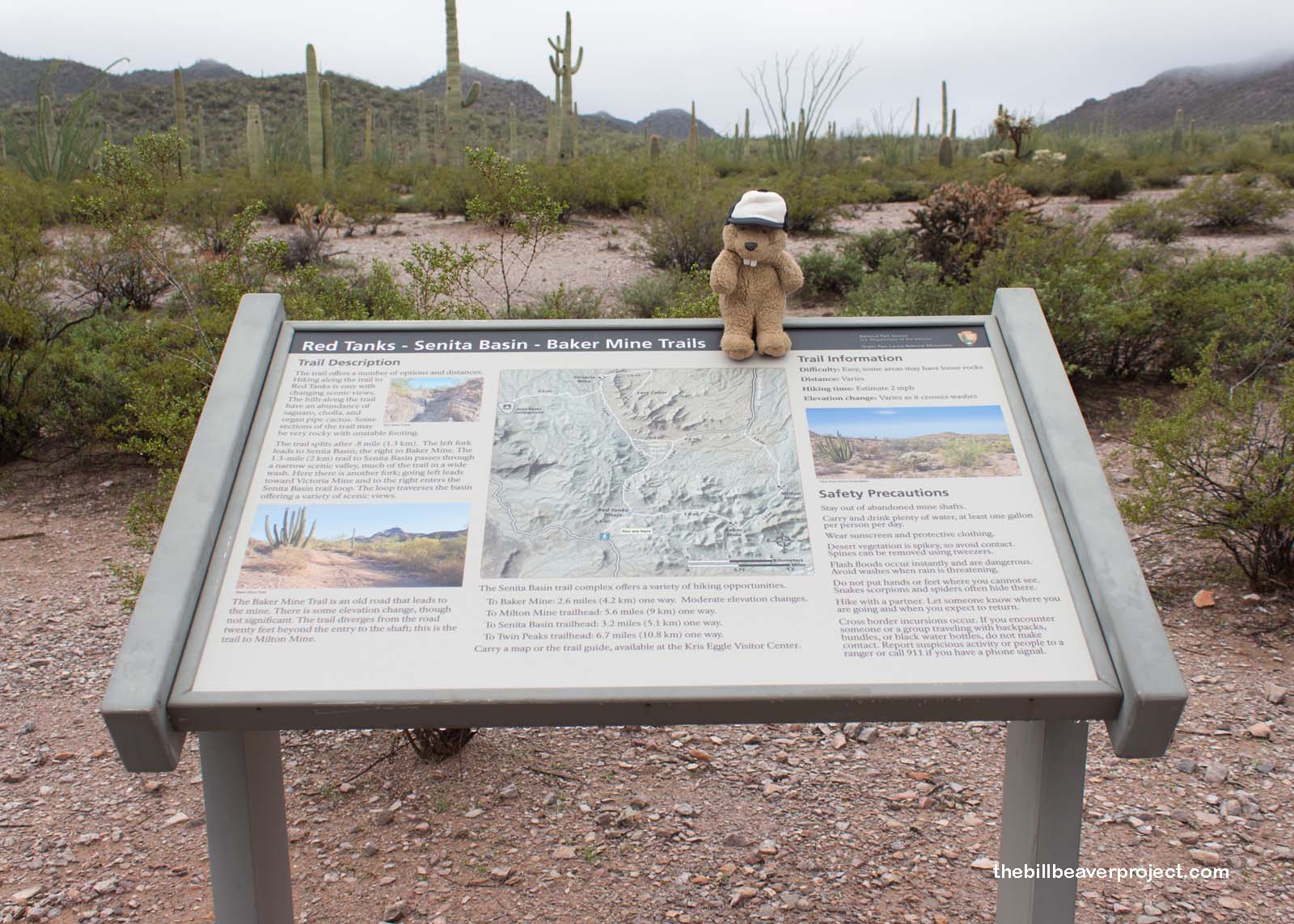 |
Firstly, there was the vast, sweeping expanse of prickly jungle and the gloomy weather cycling through. The heat of the sun can turn a beaver into jerky, and the flash floods of summer can wash a beaver away! But the second, more immediate, concern was the sign only a few hundred feet into the trailhead:
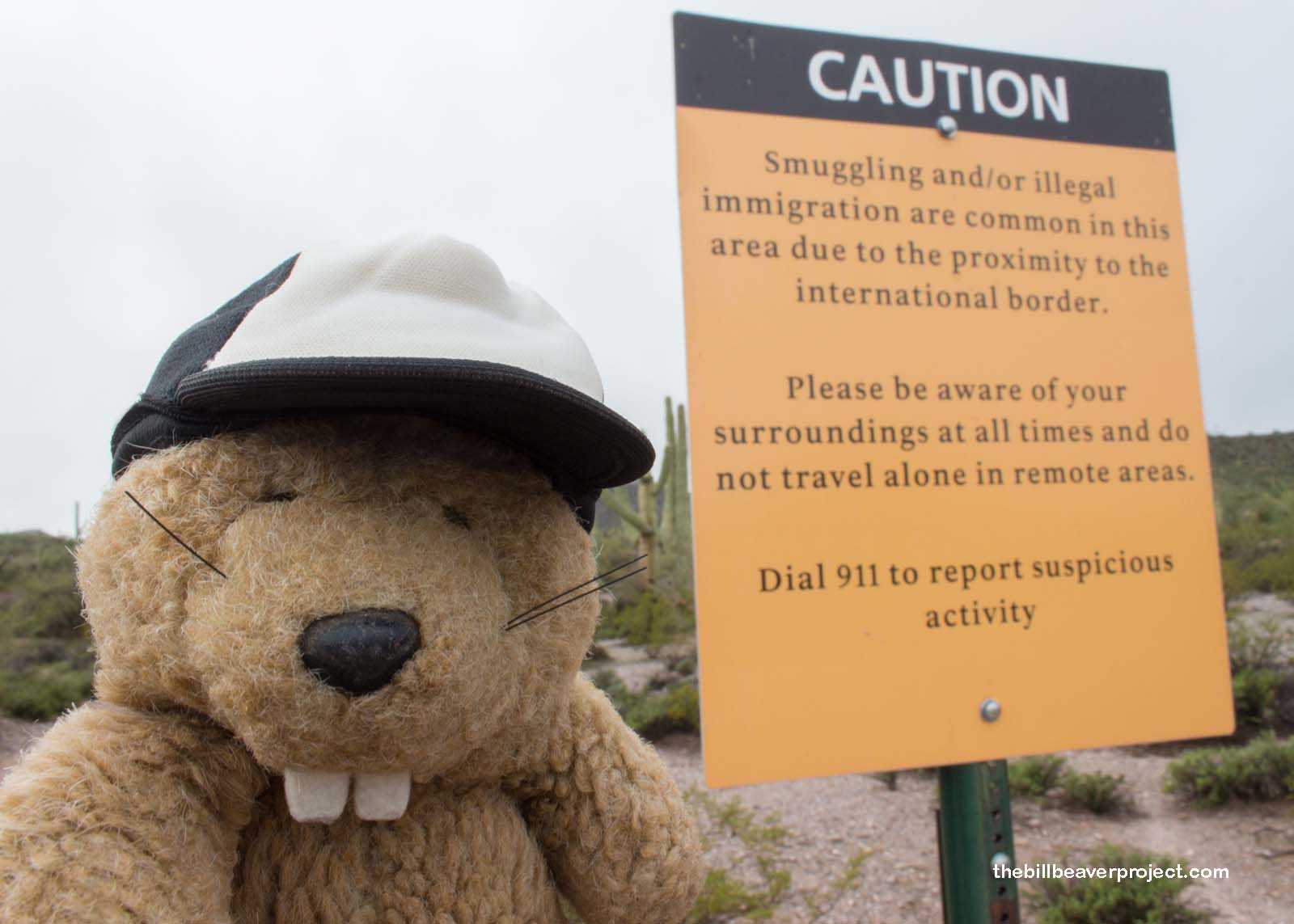 |
Smugglers! Illegal aliens! I flashed back to the memorial I’d seen just minutes earlier at the Kris Eggle Visitor Center. Kris Eggle was a park ranger, who had been shot by cartel members he’d been pursuing into the monument back in 2002! I gulped. This was going to be risky, but I was here. I’d just have to be careful.
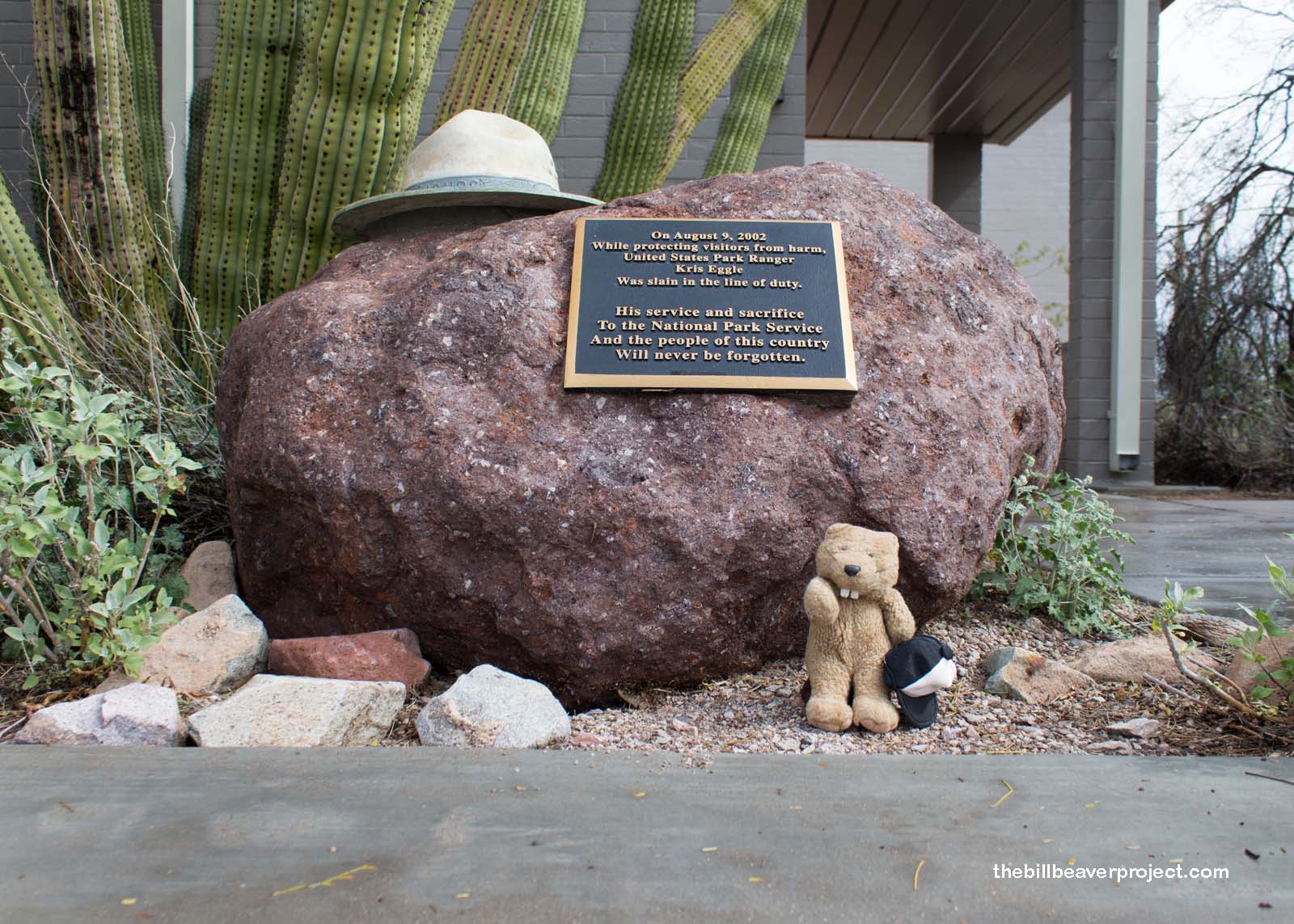 |
But the day was so beautiful, with clouds swirling around the saguaro-dotted hills. It was still and cool, and the trail was no trouble at all! Not too far in, I saw my first organ pipe cactus! These heat-loving cacti slowly moved north from the tropics as the Ice Age receded but only got this far, because they can’t handle frost! Under the hot conditions of the Arizona desert, they can thrive for as long as 150 years!
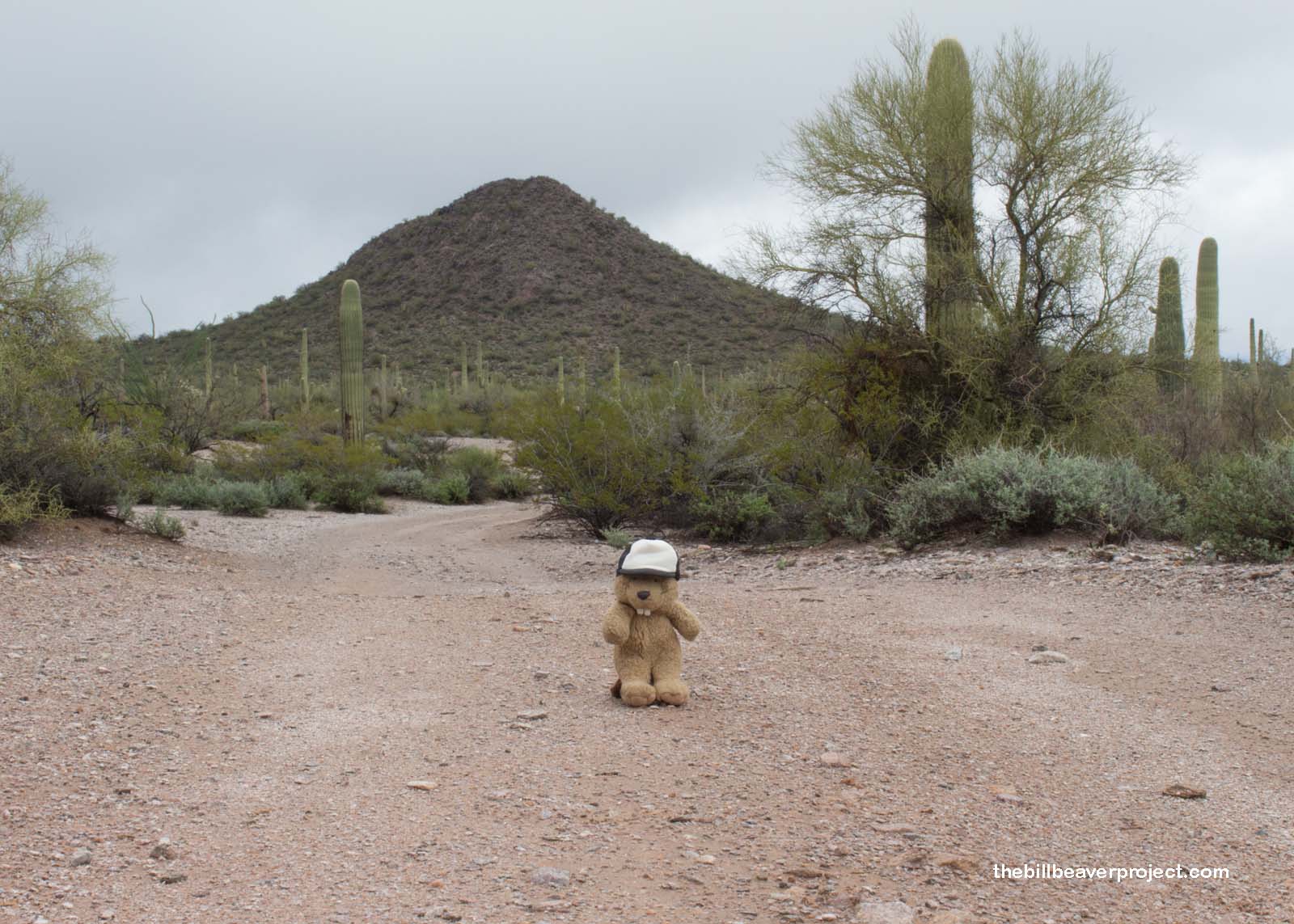 |
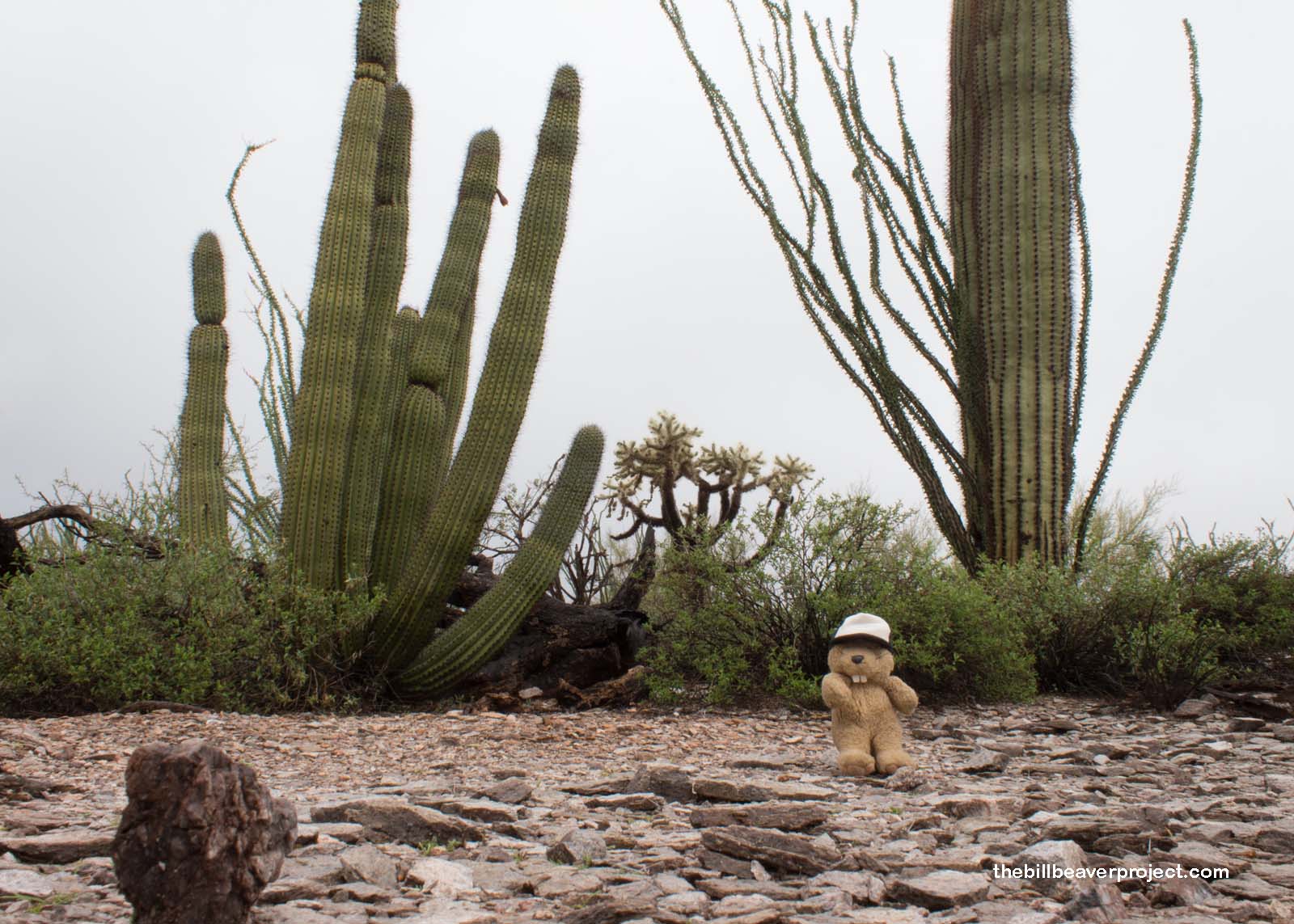 |
A little further ahead, I reached the Red Tanks Tinaja, a large pool of collected rainwater held in place by red rocks! Tinajas are important water sources for desert wildlife during the dry times. Apart from the mosquito larvae twisting an turning inside, I was the lone wildlife at the tinaja today!
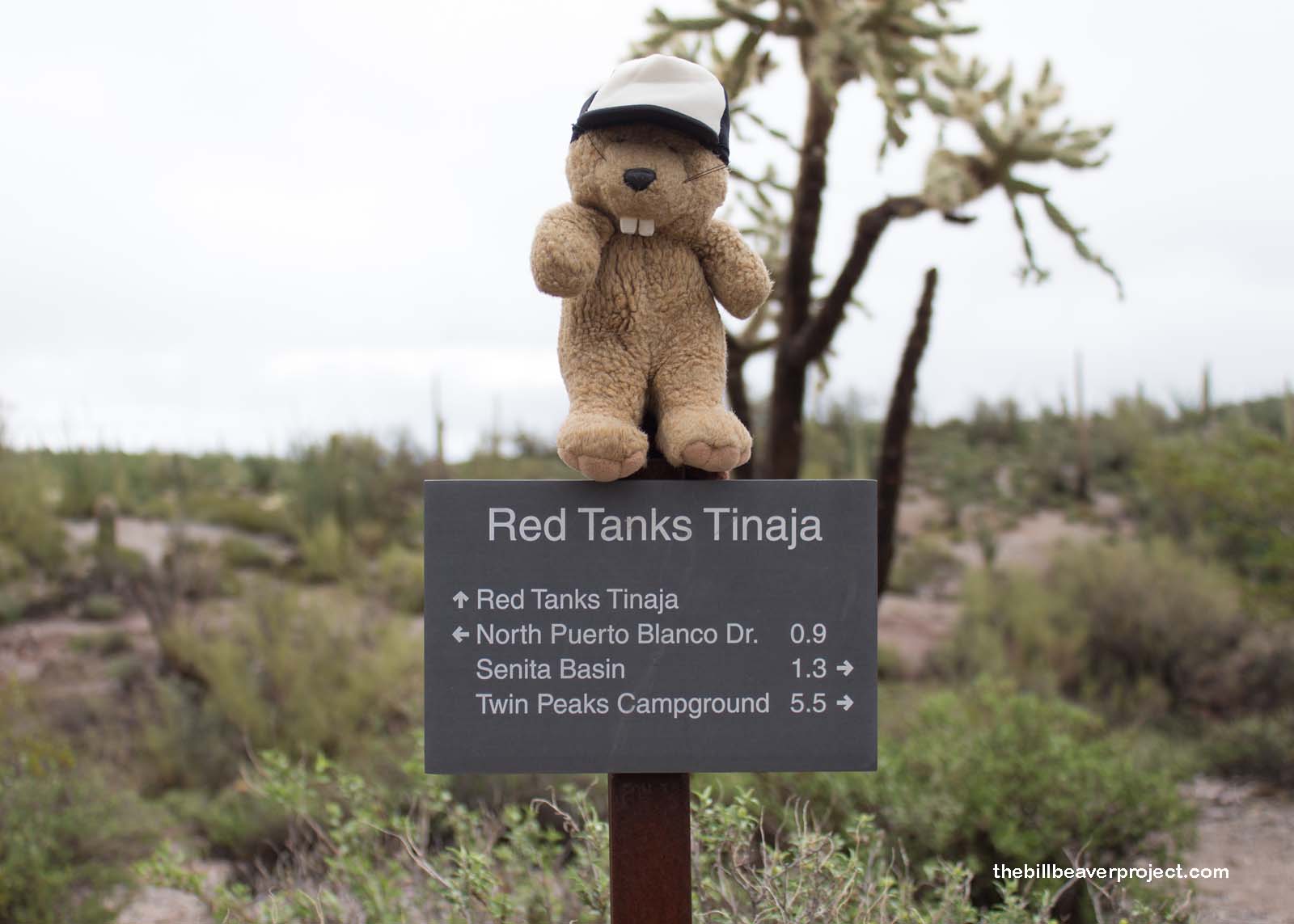 |
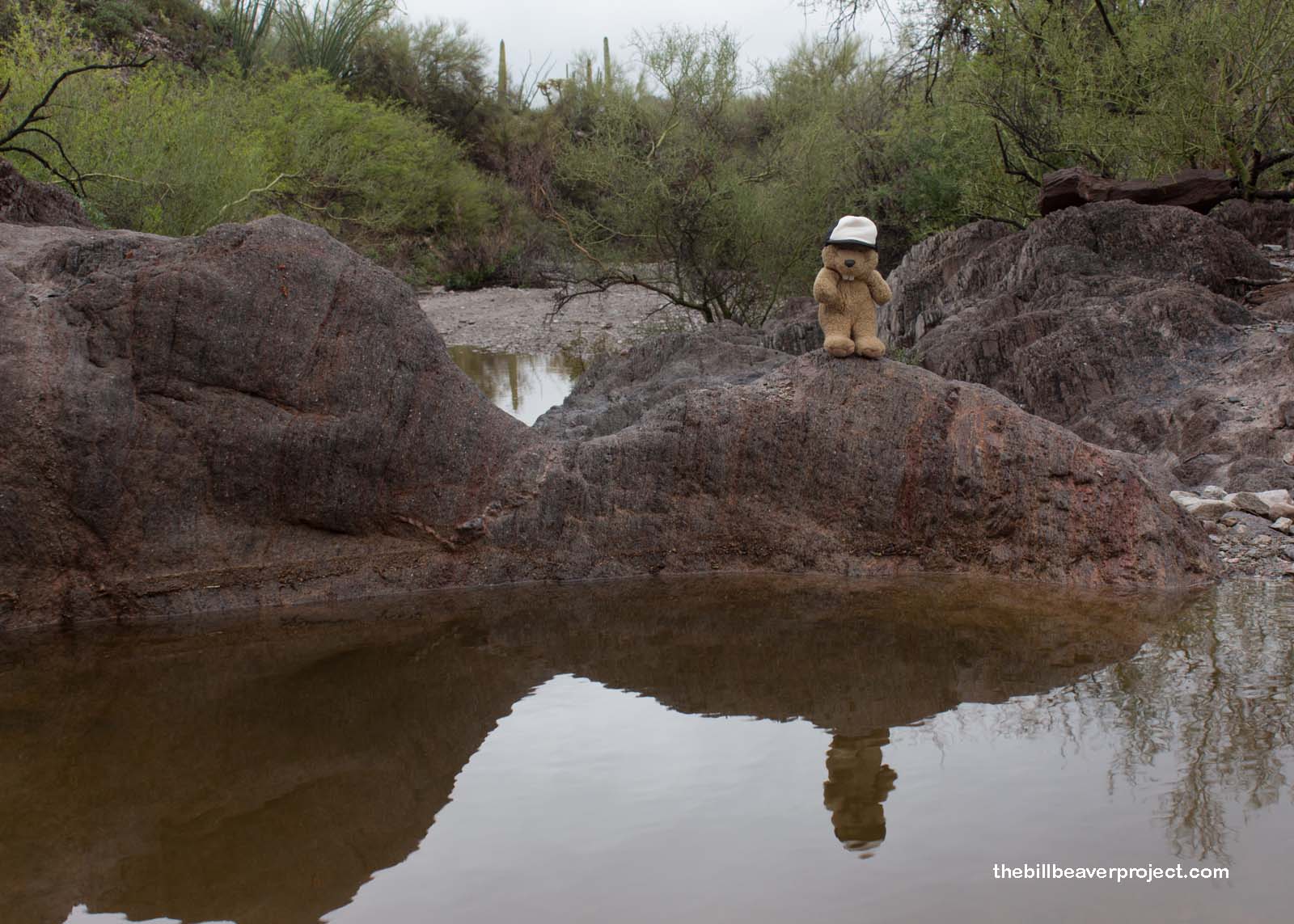 |
I continued on my quest, deeper into the isolated monument. The organ pipe cacti grew more numerous as I went, and with them swelled the symphony of songbirds! I couldn’t say what all of them were, but I did see a cardinal flit between branches. Their singing helped ease my nerves as I imagined all kinds of hostile eyes watching me from the hills. At what point should I turn back, I wondered? That answer came pretty soon!
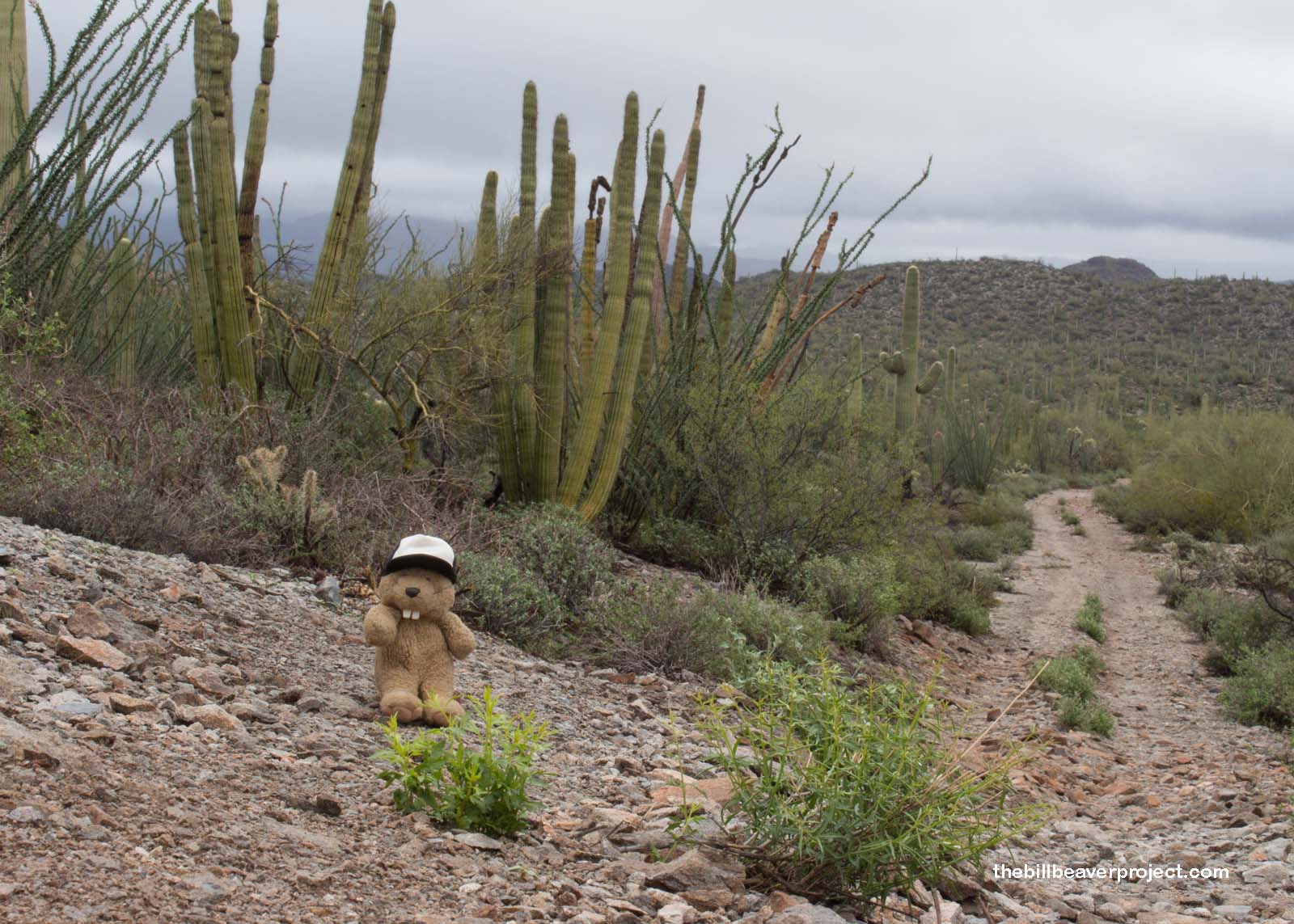 |
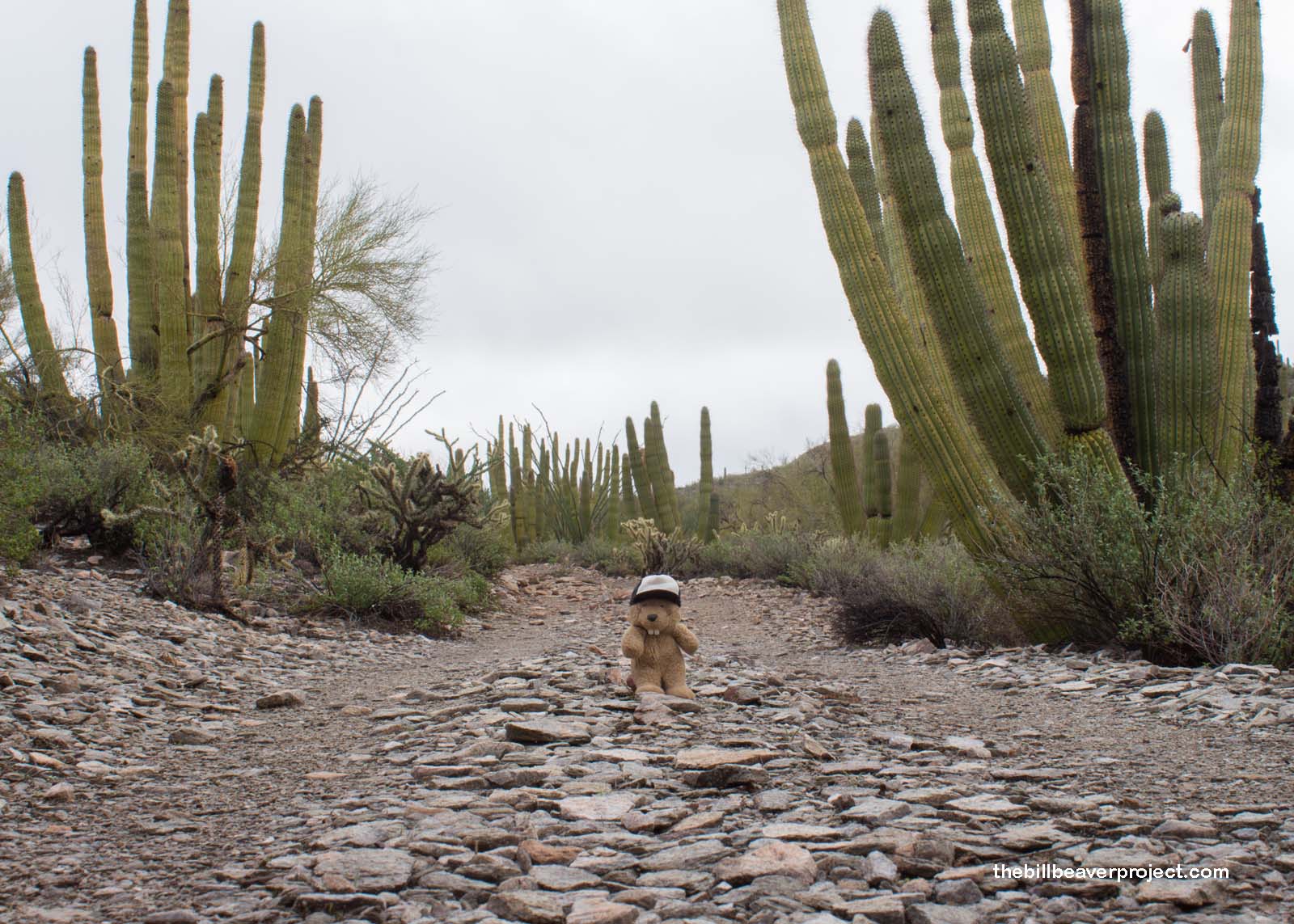 |
At last, I caught sight of the Baker Mine, named for Gordon Baker, who dug for gold and silver here in the 1920s. I walked up to the mouth of the mine to see what I can see. There was a fence barring entrance to the old, unstable mine, which had been peeled back just far enough that someone, say, a drug smuggler could easily fit through. Well, that did it for me! I figured I’d better get the heck out of here before trouble climbed out of that cave!
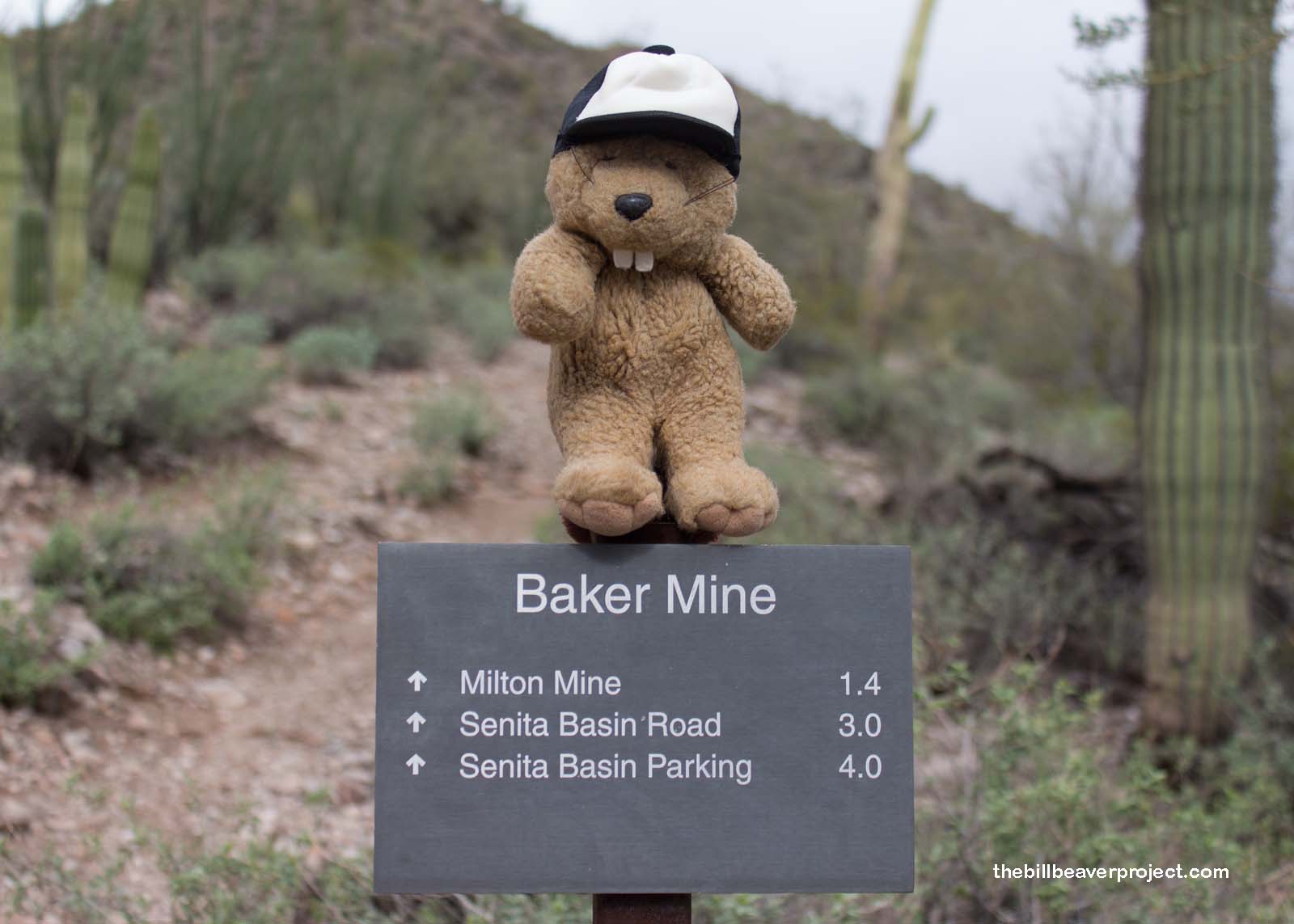 |
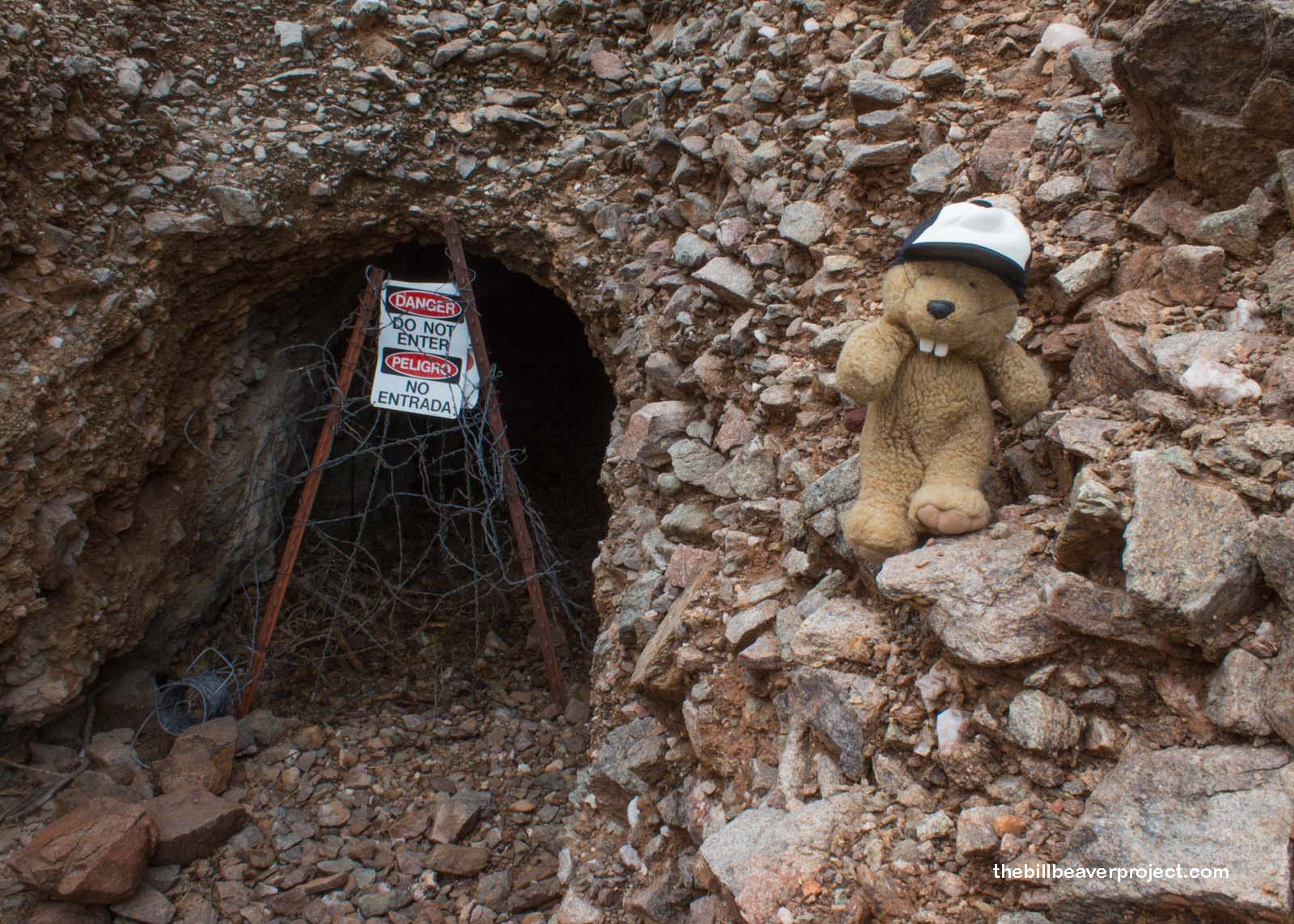 |
I hustled all the way back to the trailhead without running into any smugglers and headed off to see some of the other sites in the park. I didn’t get far. Puerto Blanco Drive, which leads to some of the park’s neat sites, like Dripping and Quitobaquito Springs, was a long, one-way mud path that my car just wasn’t going to survive. I tried the bottom of the park, running along the border fence to try and reach Quitobaquito—the only place in the world where you’ll find the Quitobaquito pupfish, Quitobaquito spring snail, Sonoyta mud turtle, and desert caper plant—but the rain had made this a hazardous mess of puddles. I had to head back toward Tucson!
That wasn’t such a bad thing, though, because, three hours later, I had another chance to explore Saguaro National Park!
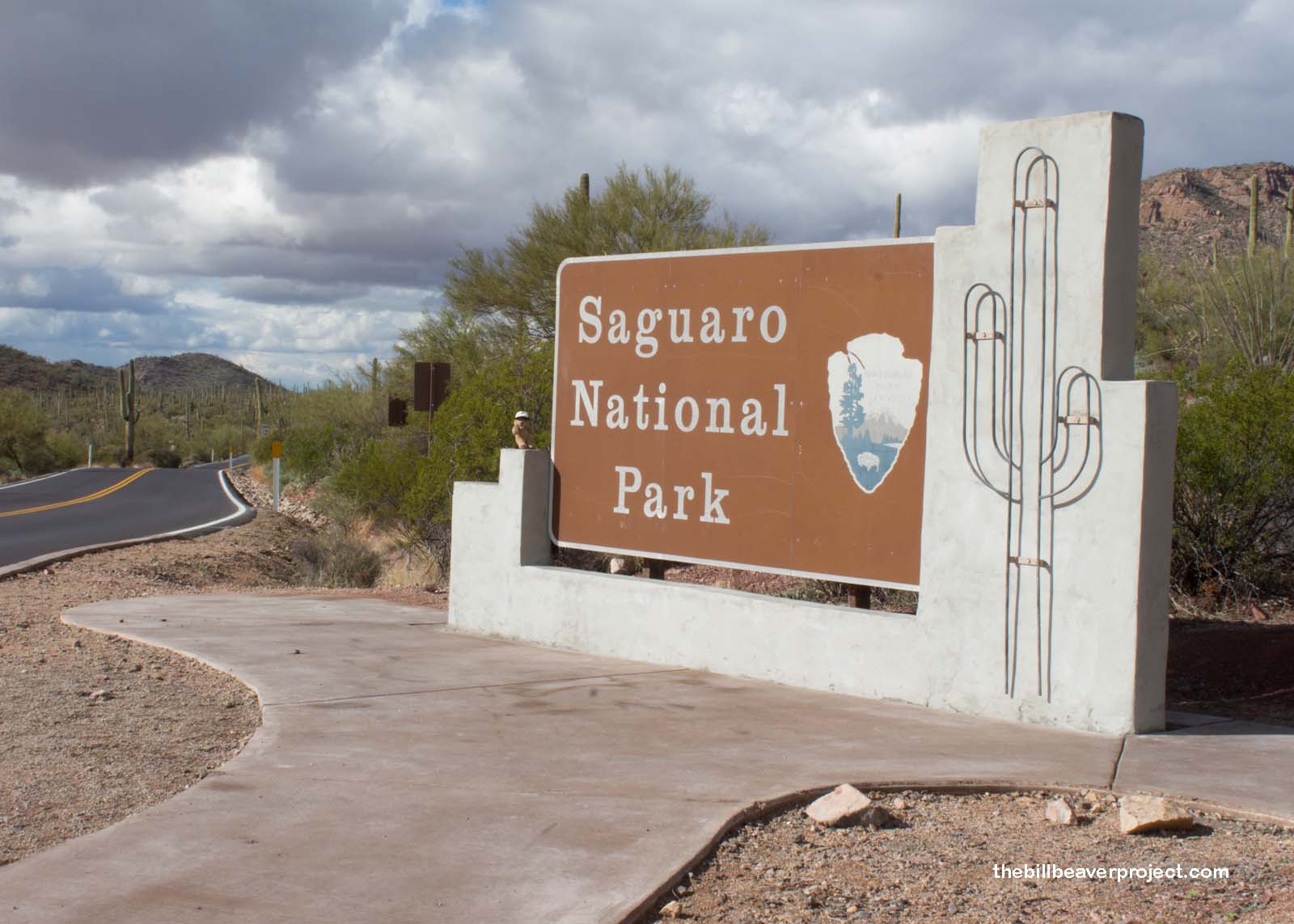 |
A sanctuary for the world’s largest cactus, Saguaro National Park is actually divided into two units: East and West! I had hoped to explore both units, but yesterday’s delays had pushed me back enough that seeing both was out of the question. So, I was going to settle for a brisk hike up the Sendero Esperanza Trail to conquer the West Unit’s tallest mountain, 4,687-foot Wasson Peak!
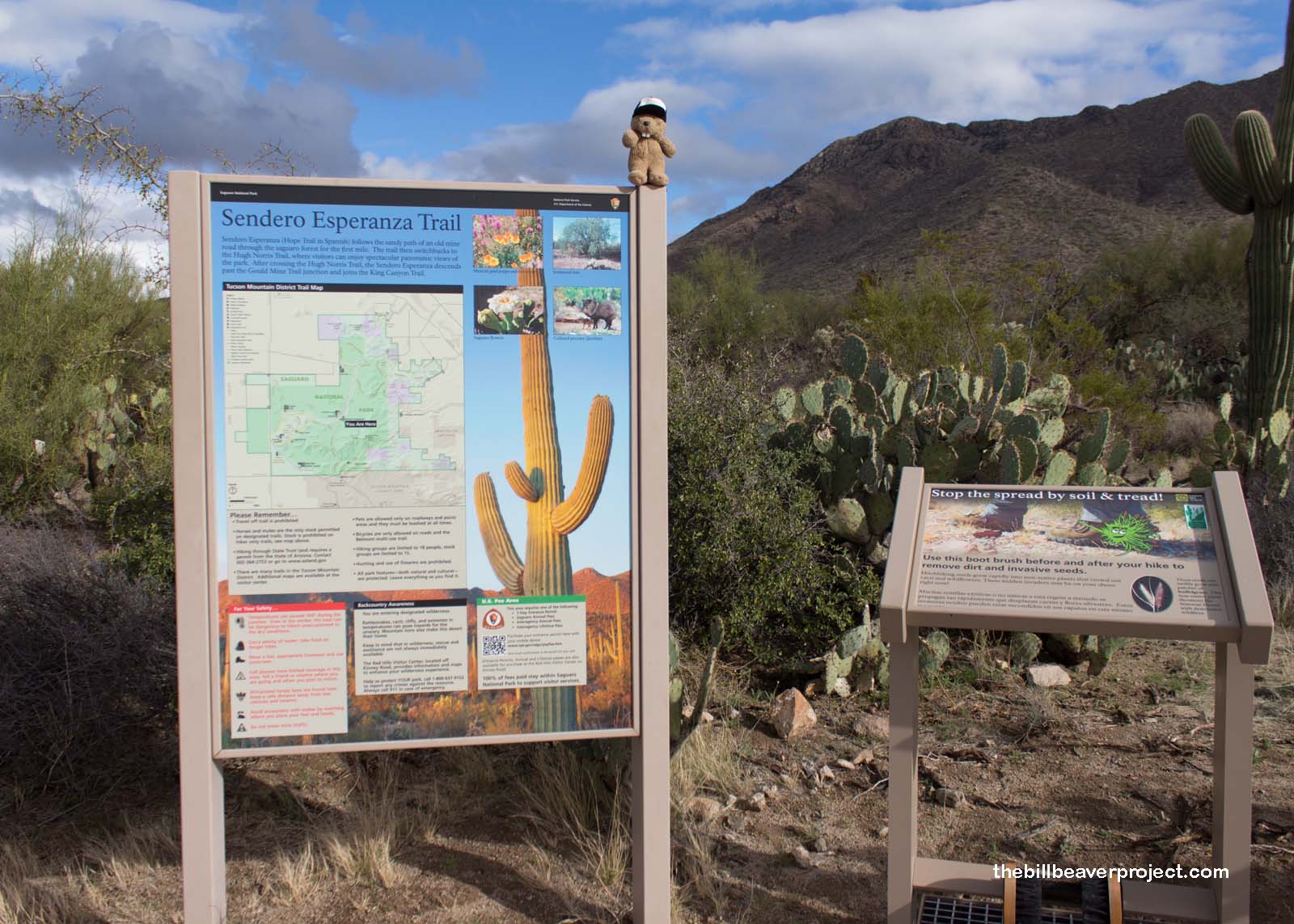 |
The trail started off nice and flat through some underwhelmingly sparse saguaros. I’d hoped this was going to be a little more spectacular, but as I’ve learned from years of hiking, the higher you go, the better it gets!
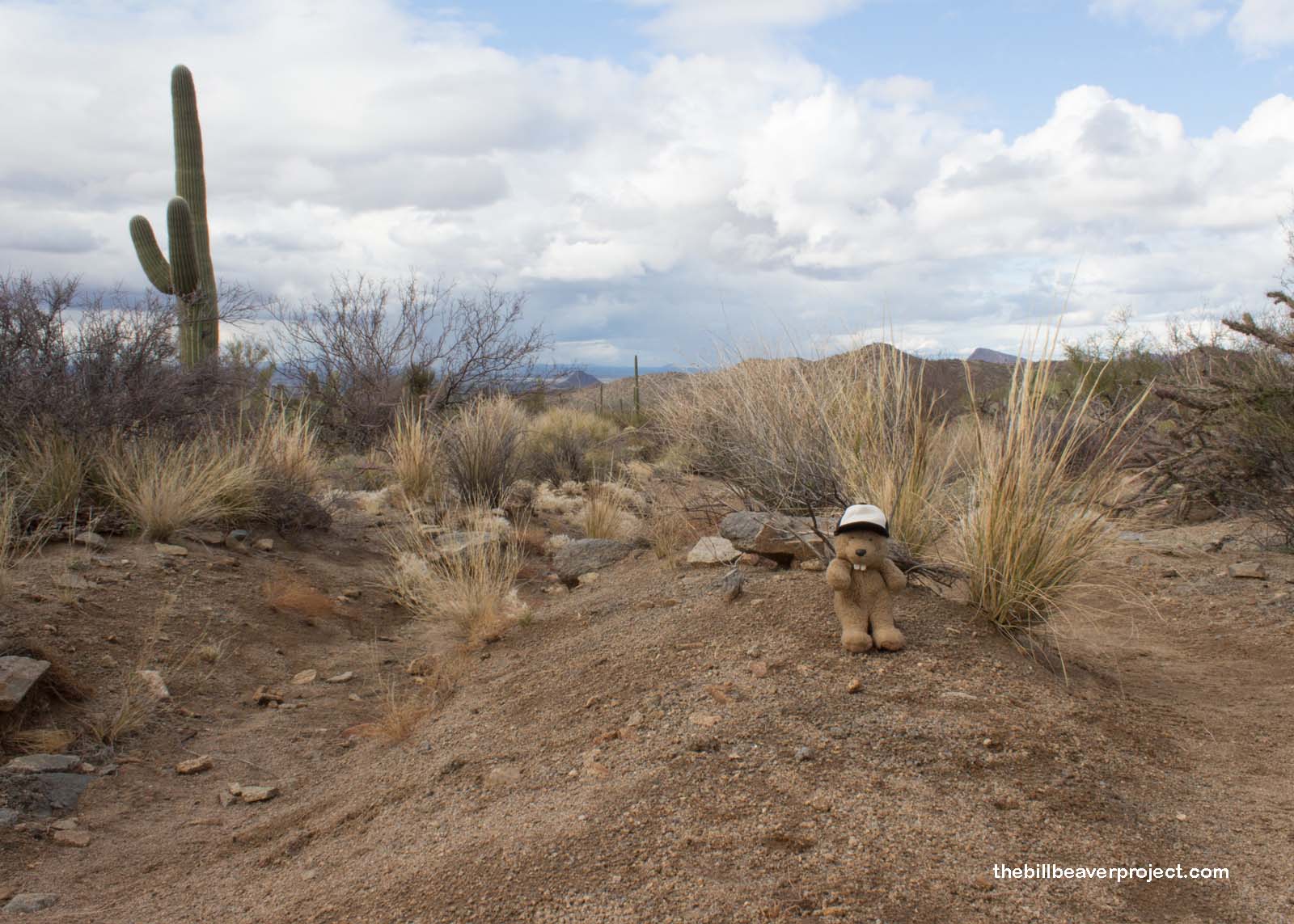 |
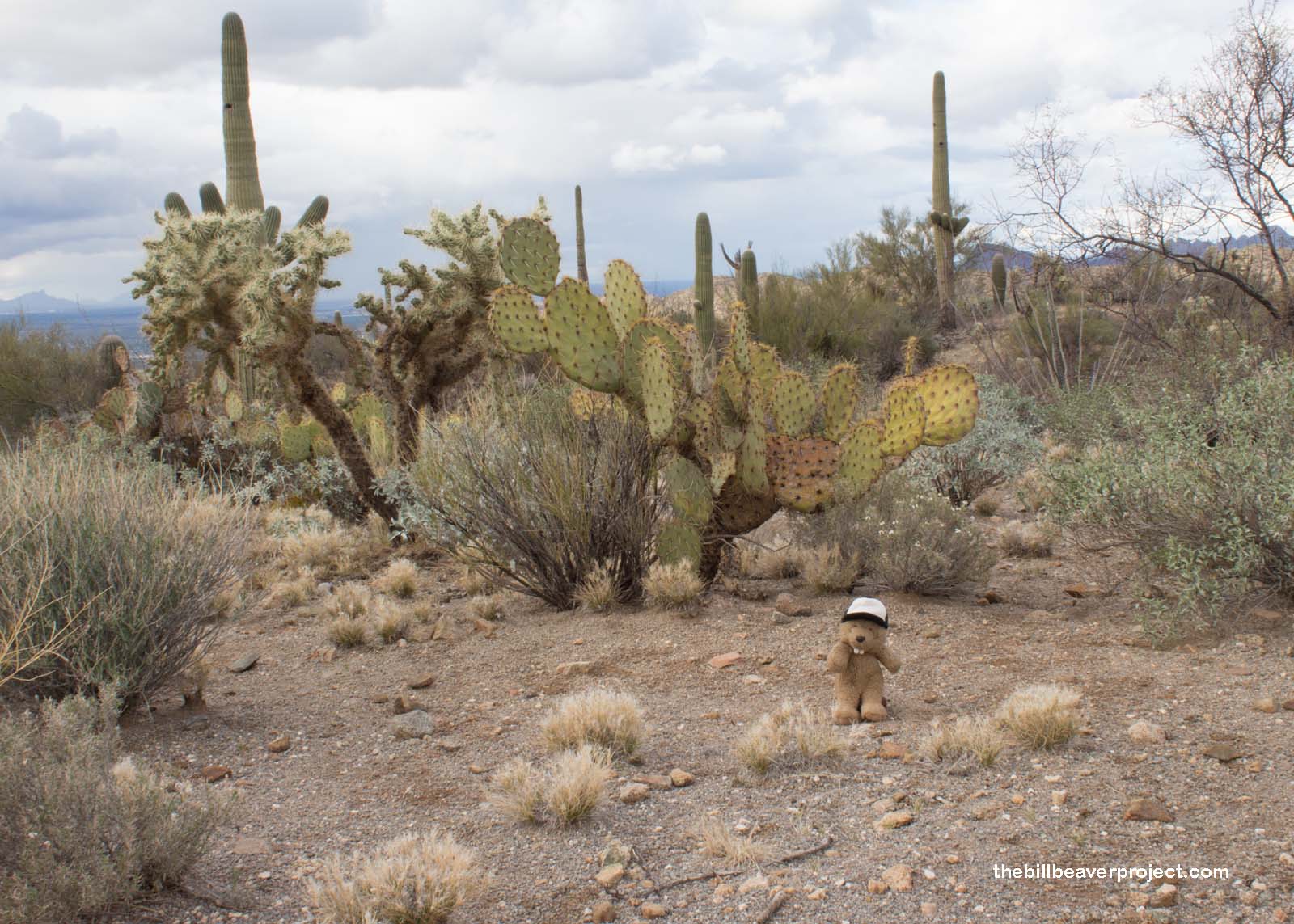 |
I didn’t have to wait long. I really can’t get enough of saguaros! They’re so charismatic and expressive in all the ways the imagination can project onto these desert giants!
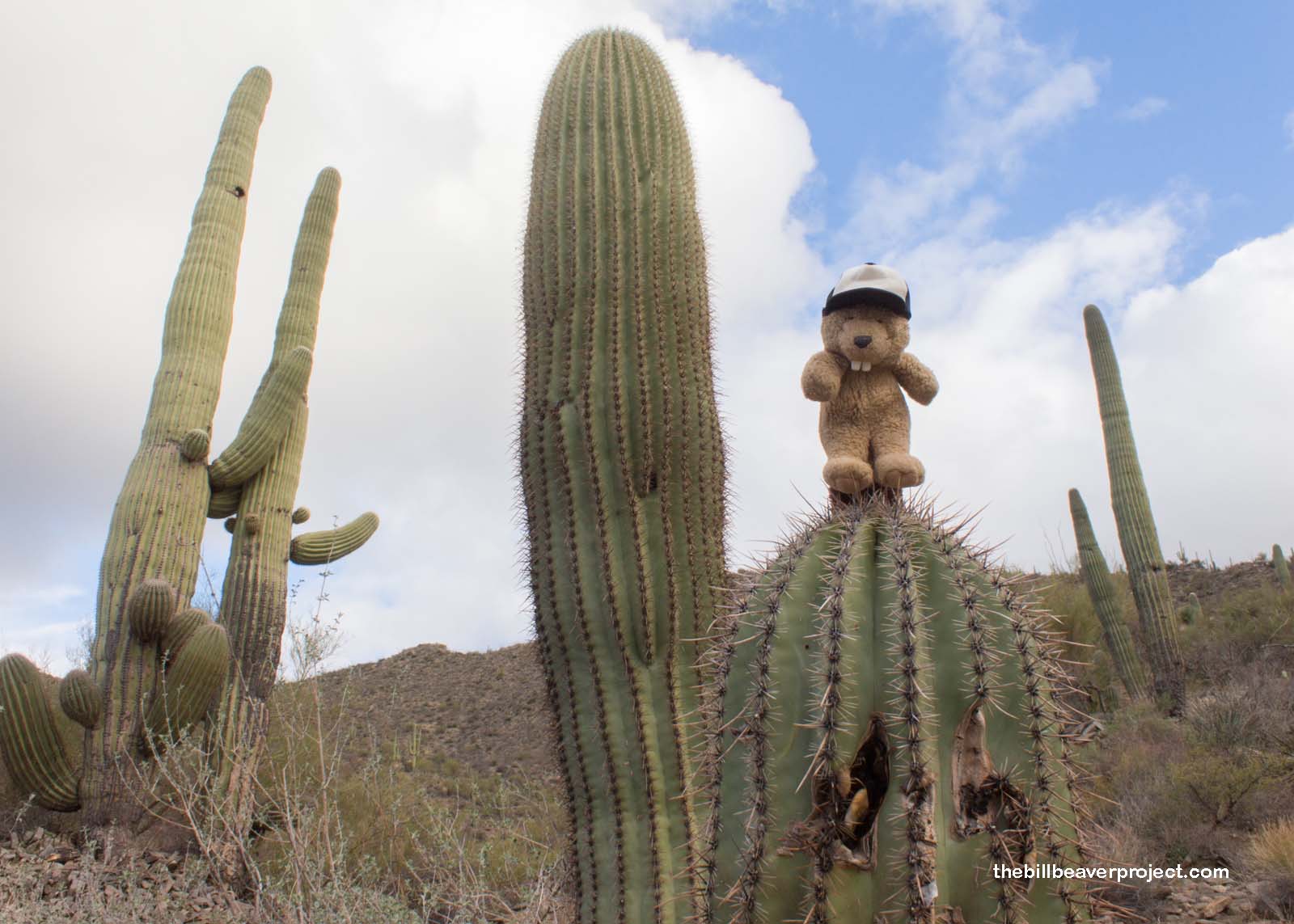 |
After this point, the trail switched back and forth up the north slope of the mountain range with the views of Tucson getting far more sweeping!
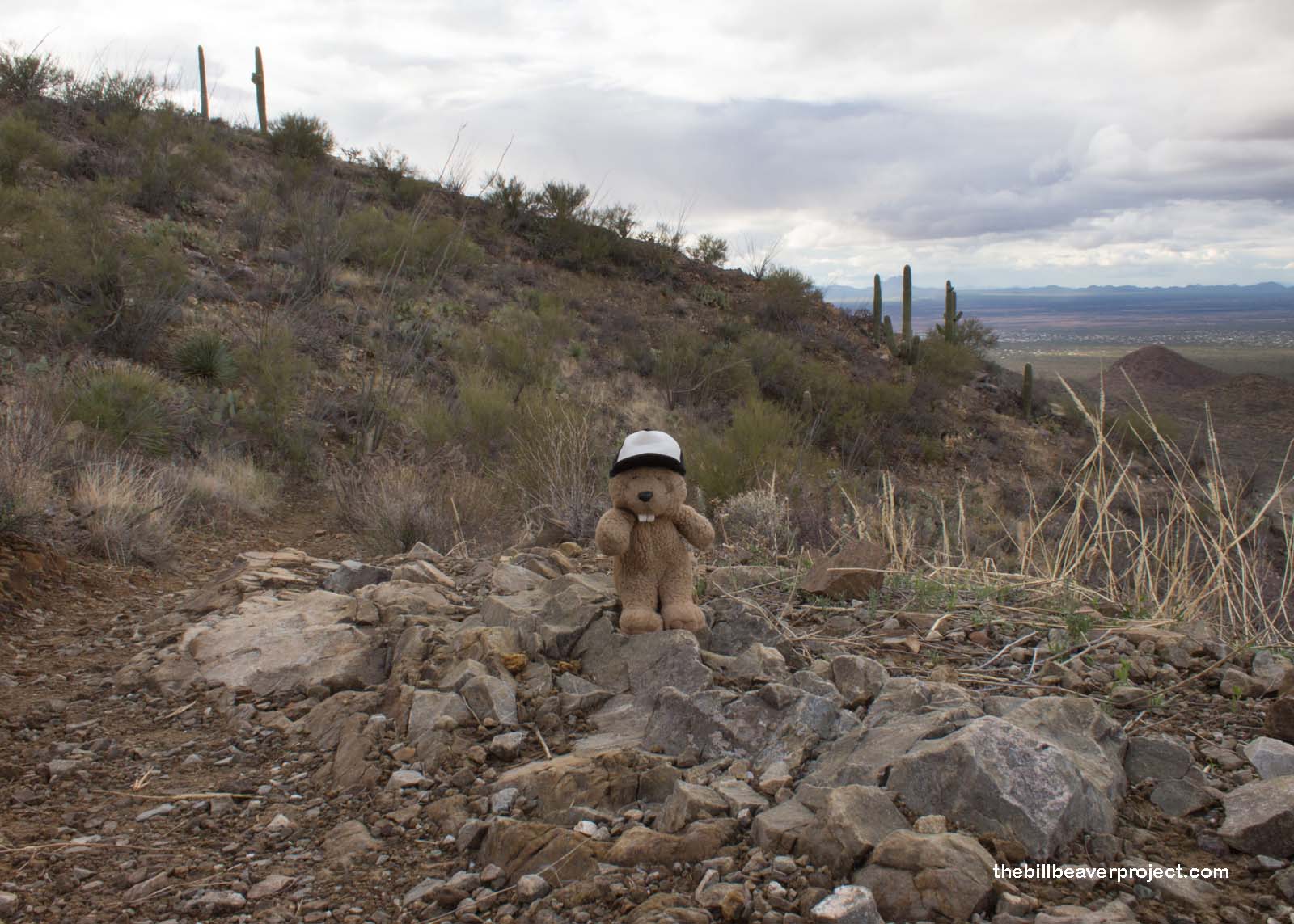 |
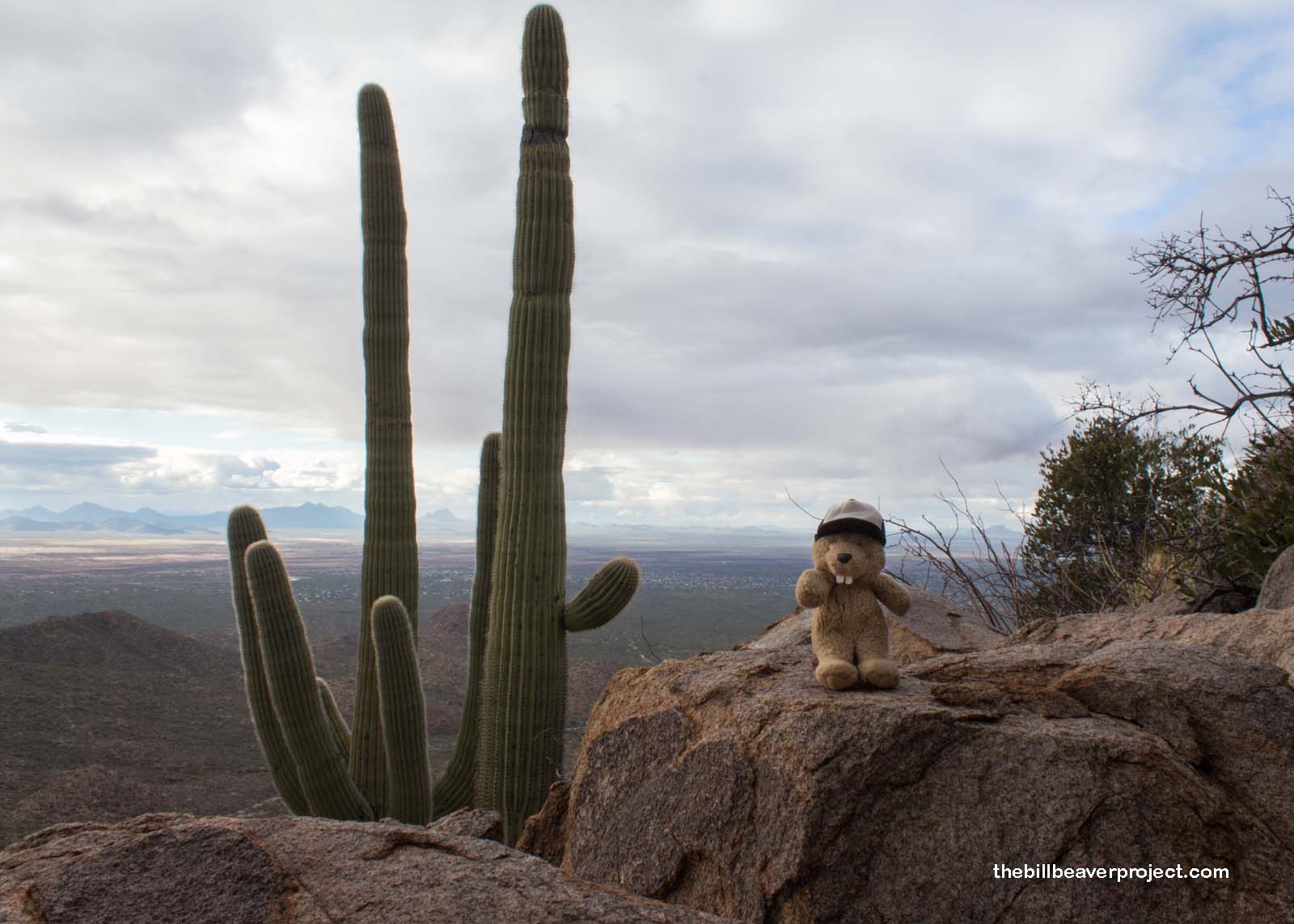 |
I took a break at the saddle to peer out at the black clouds off in the distance that I was just barely missing. The sun peeked its head through the clouds in the west and revealed a huge saguaro city on the southern slope. There were thousands of them, lit up in bright green against the blackness, and I had to pause a moment to marvel at them!
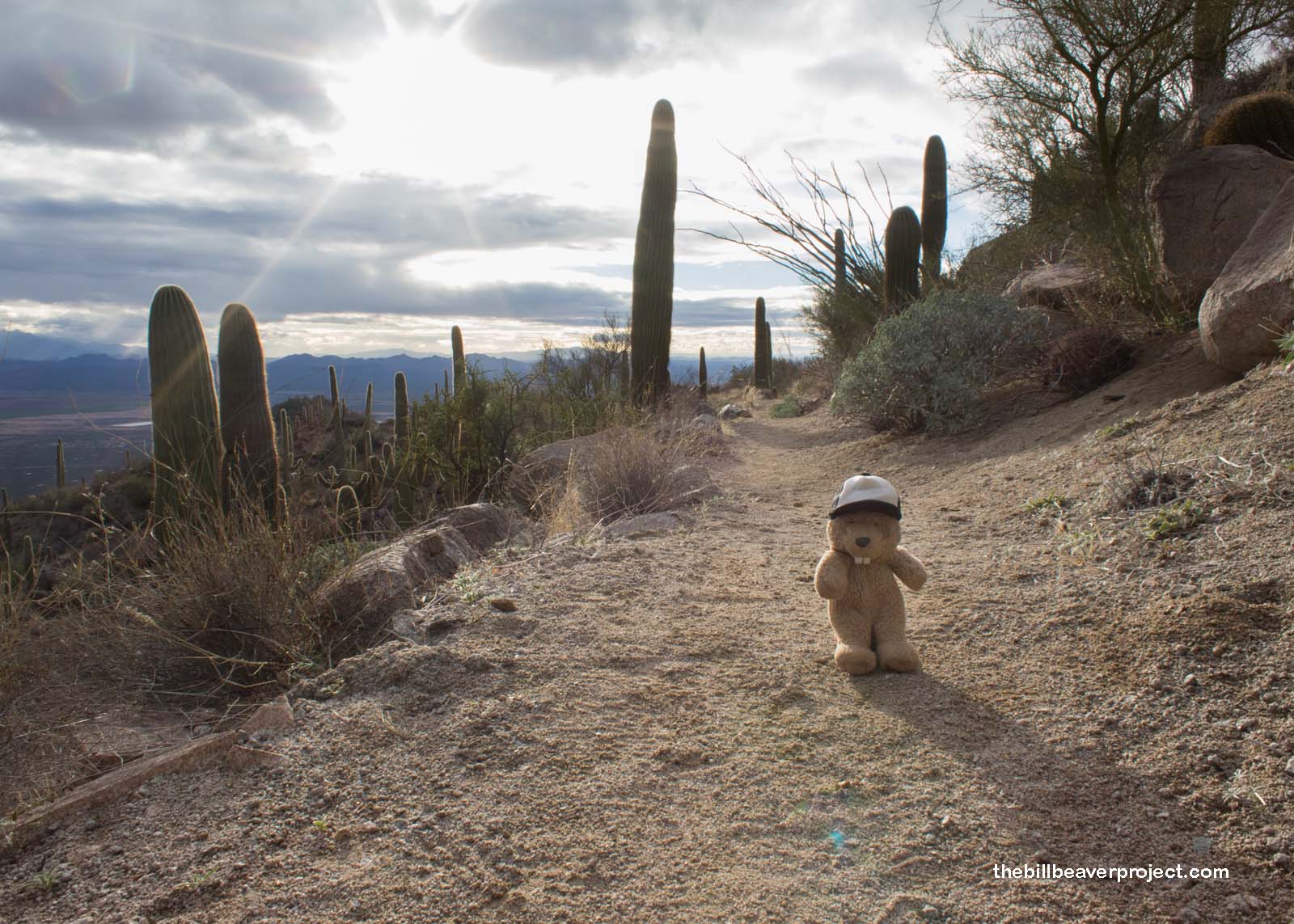 |
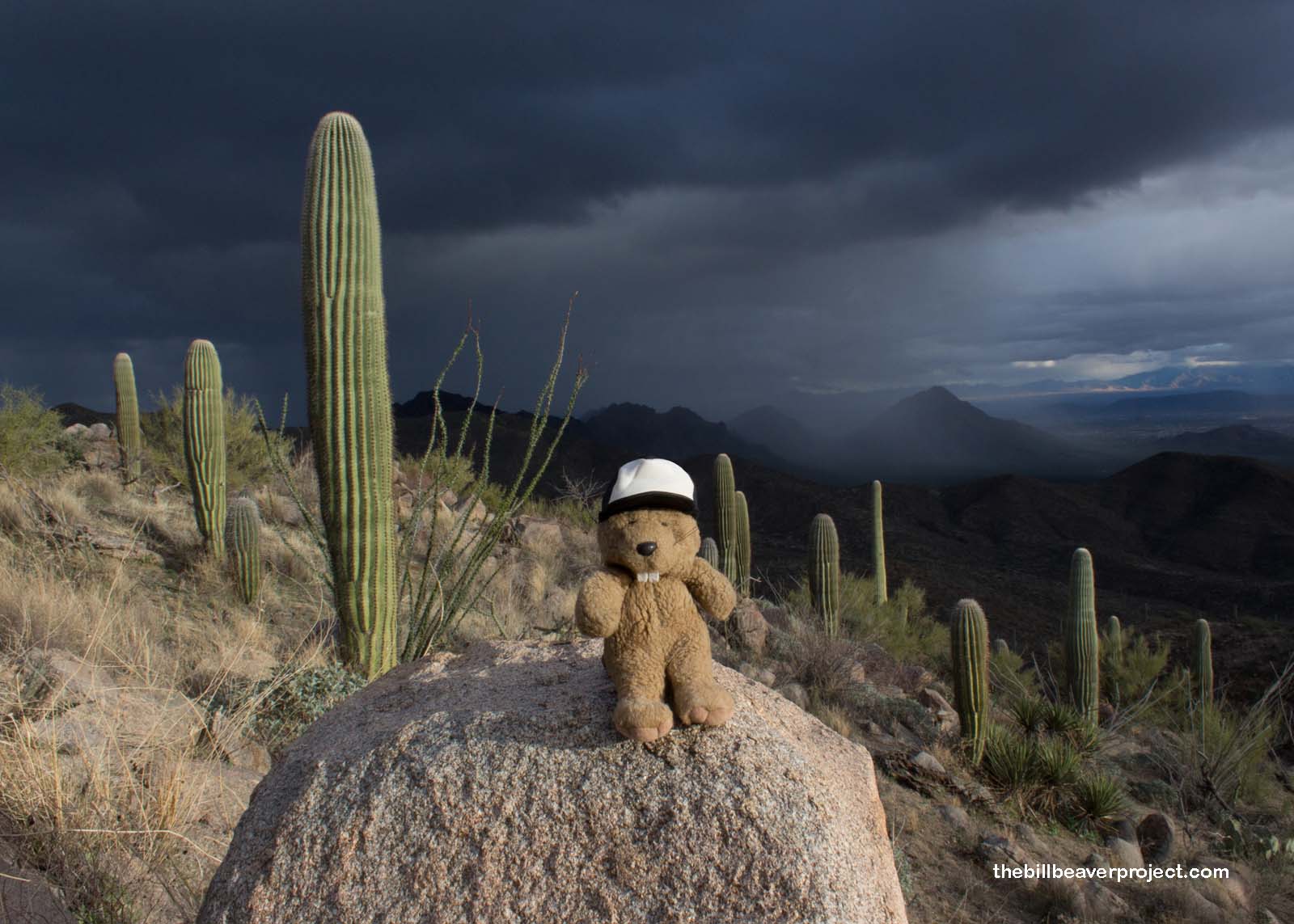 |
Then I realized it was an hour before sunset and I still had a long way to go!
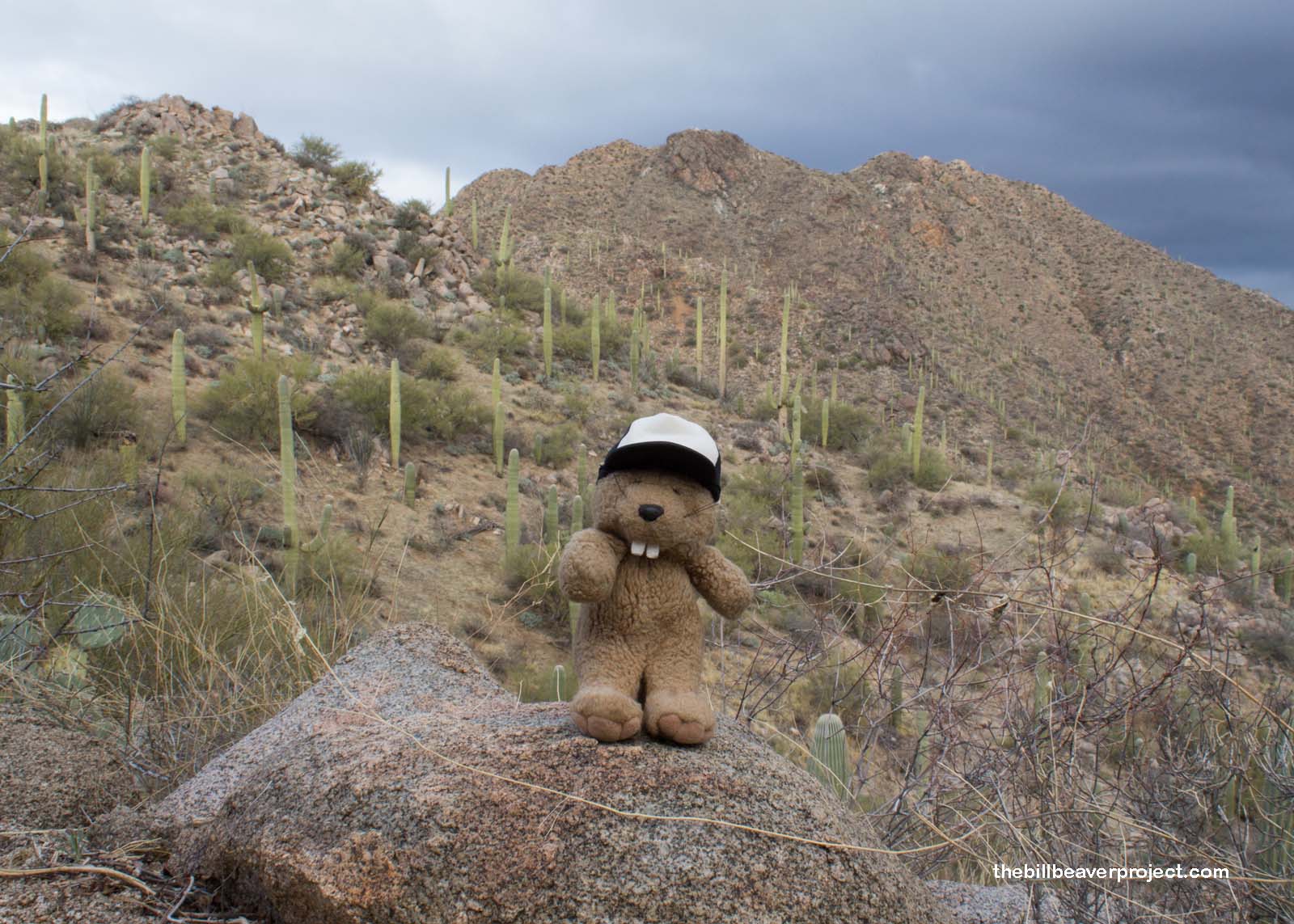 |
That meant I had to hustle! Half walking, half jogging, I leapt into the last leg of the summit, ascending higher and higher, with one eye on the clouds, another on the trail, another on the sun, and another on possible signs of mountain lions. Wait, that doesn’t make sense. Anyway, I was hoofin’ it!
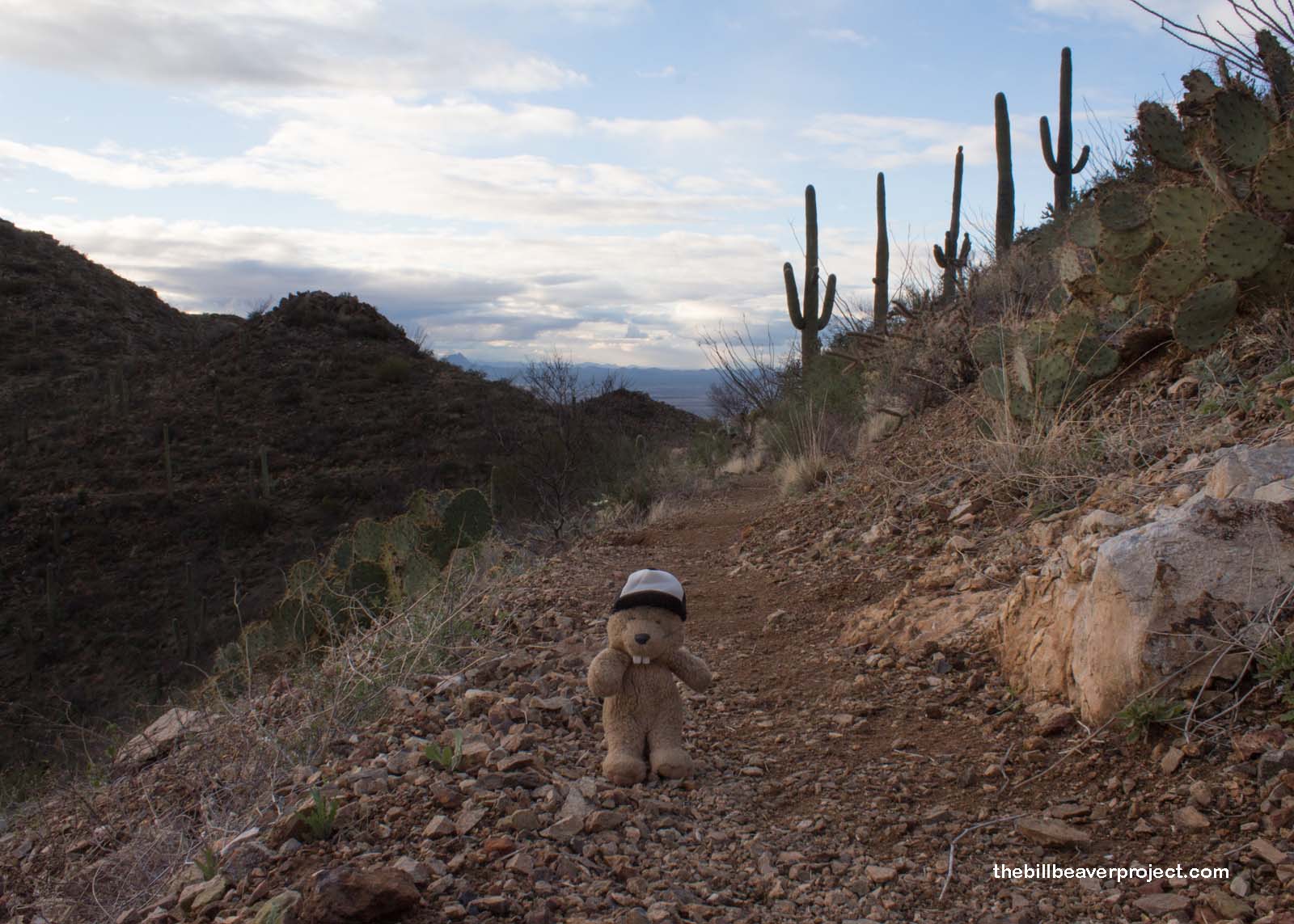 |
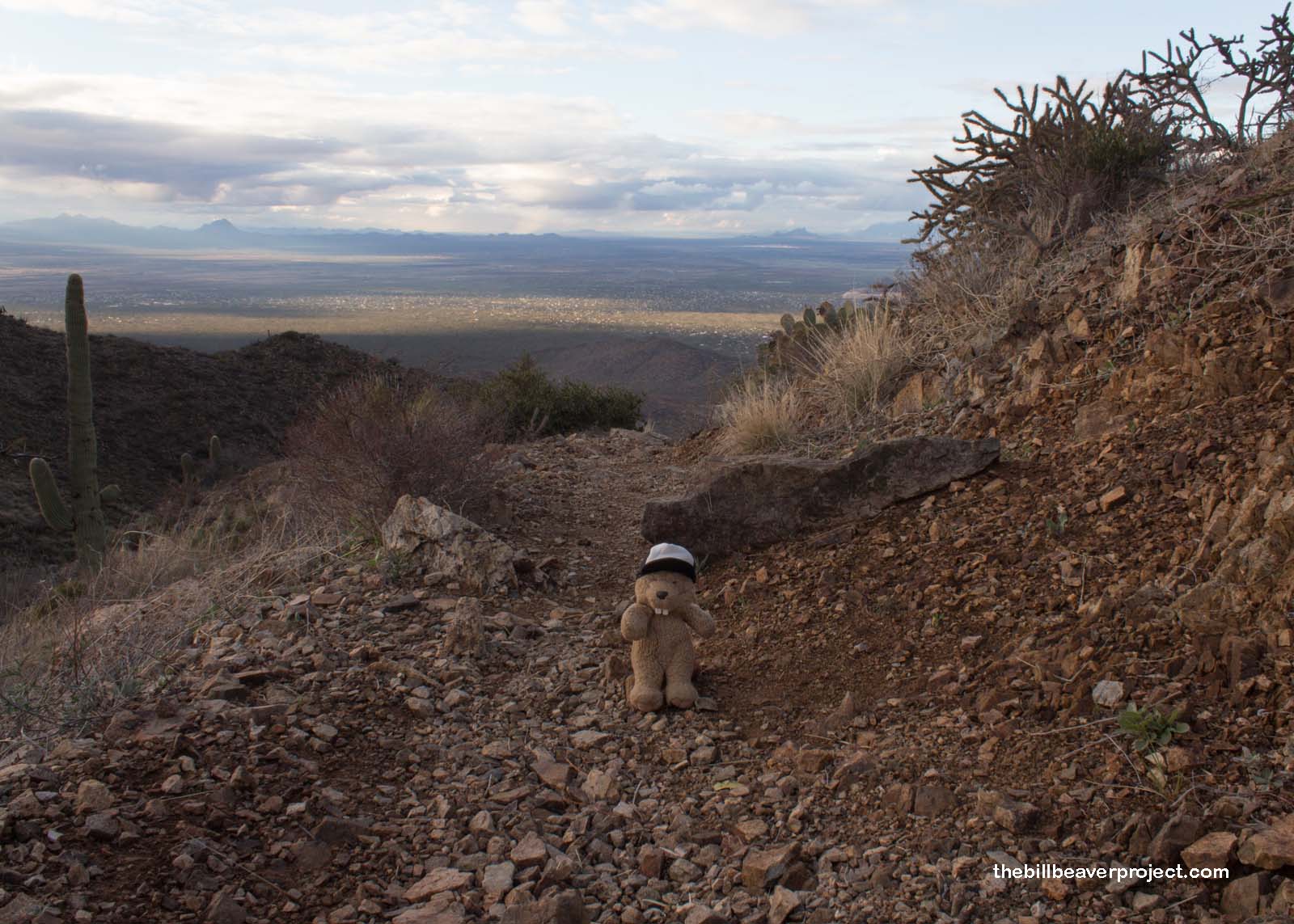 |
When you’re hurrying up a mountain, it gets really exhausting, but the spectacular views on all sides make up for it. Nonetheless, each fake summit you meet strikes you like a cactus to the back! There were at least two on this hike, and then, at last, I made it!
|
|
I had conquered Mount Wasson, surrounded by black and dangerous skies above and the sprawling city below! I sat a moment to catch my breath and enjoy the sunset. The sunset! Oh no! I was up a 3-mile mountain with the sun setting! Mountain lion hour!
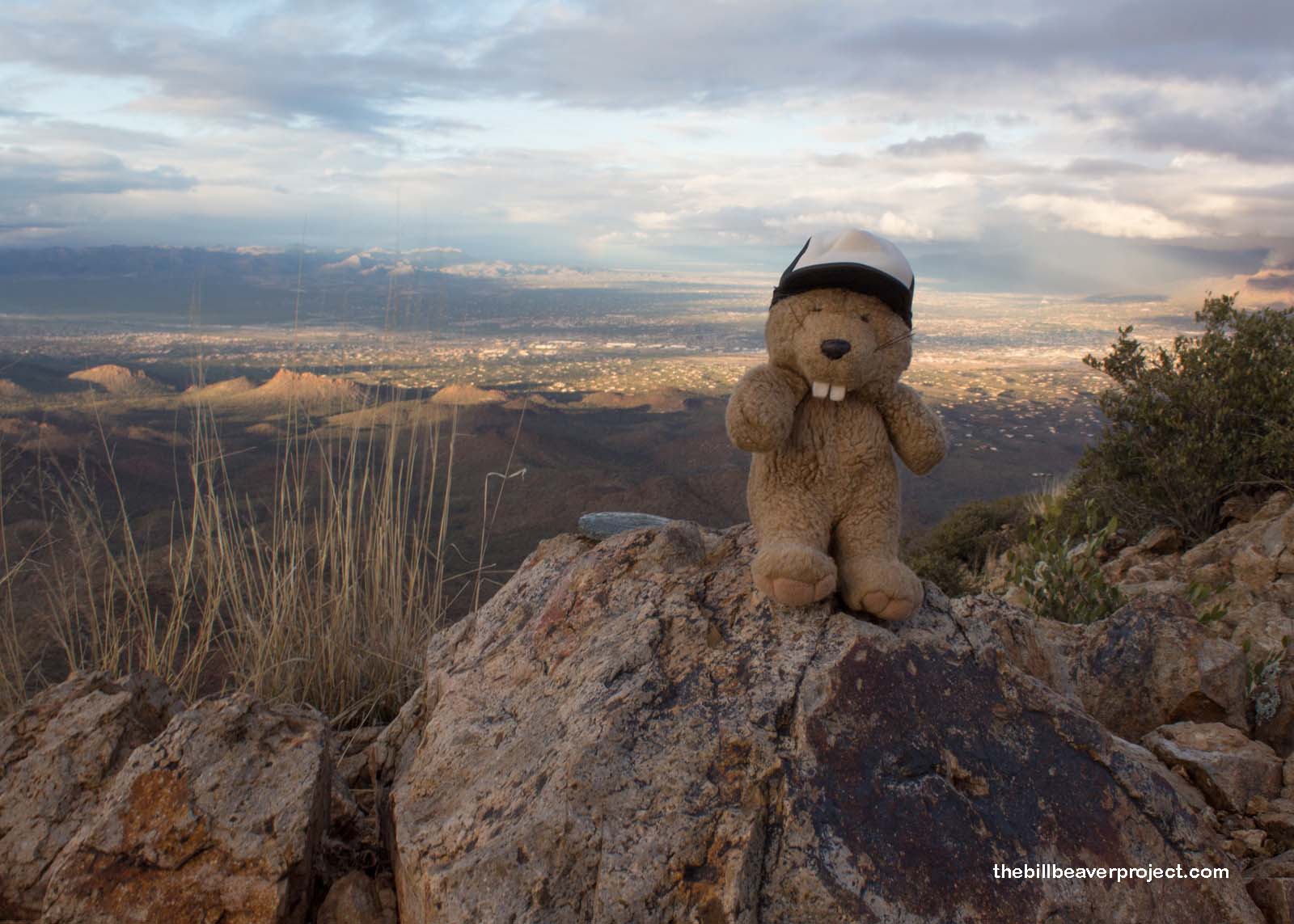 |
As much as I would have loved to relax just a little longer, I had to hurry once again. With a few short breaths to prep, I jogged all the way down the mountain, finishing up the trail by the single beam of a flashlight! It sure was unnerving, but so worth the trek!
Sayonara, saguaros!

